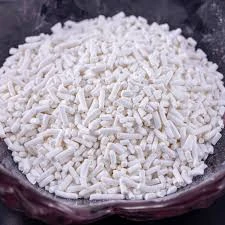
Trichloroisocyanuric Acid Market Pricing Trends and Analysis for 2023
The Price of Trichloroisocyanuric Acid Trends and Factors Influencing Costs
Trichloroisocyanuric acid (TCCA) is a widely used chemical compound in various industries, primarily known for its effectiveness as a disinfectant and chlorinating agent in swimming pools, water treatment facilities, and other sanitation applications. The pricing of TCCA has become a subject of interest for manufacturers, suppliers, and consumers alike, as it is influenced by a myriad of factors ranging from raw material costs to market demand and regulatory changes.
Current Pricing Trends
In recent years, the price of TCCA has experienced fluctuations due to several market dynamics. As of late 2023, the average price for TCCA has been hovering around $1.50 to $3.00 per kilogram, although this can vary significantly depending on the supplier, geographic location, and market demand. These prices are reflective of the production costs, including raw materials and manufacturing processes, as well as supply chain logistics that contribute to the final cost observed by consumers.
Factors Influencing TCCA Prices
1. Raw Material Costs The primary raw materials used in the production of TCCA, such as cyanuric acid and chlorine, have their own market prices that can be volatile. Any increase in the cost of these inputs can directly affect the production cost of TCCA, thereby influencing its market price.
2. Demand Fluctuations The demand for TCCA is closely tied to seasonal trends, particularly in regions with warm climates where swimming pools are a popular recreational option. During peak seasons, typically in the summer months, demand spikes. Conversely, during off-seasons, prices may decrease due to lower consumption rates.
trichloroisocyanuric acid price

3. Regulatory Impact Environmental regulations regarding the use of chlorine-based products can impact production practices and costs. Stricter regulations may lead manufacturers to invest in cleaner or more sustainable production methods, which can increase operational costs, prompting a rise in prices.
4. Global Market Dynamics TCCA is traded internationally, and global events such as trade tariffs, import/export regulations, and geopolitical instability can have a significant impact on pricing. For instance, supply chain disruptions caused by global crises, such as pandemic-related restrictions, can lead to shortages and price increases in the affected regions.
5. Market Competition The market for TCCA is competitive, with numerous manufacturers vying for a share. This competition helps keep prices in check; however, if a significant player in the market scales back production or exits the market, it can lead to price hikes due to reduced availability.
6. Innovations and Alternatives Research and development efforts aimed at creating alternative disinfectants may influence the demand for TCCA. If effective alternatives become popular, this could lead to a decrease in TCCA usage and consequently affect its market price.
Future Outlook
Looking forward, the price of trichloroisocyanuric acid is likely to be influenced by the interplay of the aforementioned factors. As sustainability becomes more prominent in the chemical industry, manufacturers may need to adjust their practices and pricing structures to comply with new standards. Additionally, the trend towards automation and technological advancements in production processes may either mitigate costs or create new pricing challenges.
In conclusion, the price of trichloroisocyanuric acid is a complex interplay of industry-specific factors, market demand, and global economic conditions. Stakeholders in industries reliant on TCCA must keep a close eye on these dynamics to navigate pricing effectively, ensuring that they can maintain access to this vital chemical while managing their operational costs. As the industry evolves, continued monitoring and adaptation will be key to leveraging the opportunities presented by the fluctuations in TCCA pricing.
-
Sodium Dichloroisocyanurate Safety Handling ProtocolsNewsJul.29,2025
-
Mining Chemicals for Copper Extraction Processes GuideNewsJul.29,2025
-
Fertilizer for Sale Shipping and Storage TipsNewsJul.29,2025
-
Dimethyl Disulfide as Sulfurizing AgentNewsJul.29,2025
-
Benzotriazole Safety Data Handling and Storage GuidelinesNewsJul.29,2025
-
Ammonium Bicarbonate Safety Handling Storage GuidelinesNewsJul.29,2025
-
The Transformative Role Of Trichloroisocyanuric Acid in Water TreatmentNewsJul.23,2025
Hebei Tenger Chemical Technology Co., Ltd. focuses on the chemical industry and is committed to the export service of chemical raw materials.
-

view more DiethanolisopropanolamineIn the ever-growing field of chemical solutions, diethanolisopropanolamine (DEIPA) stands out as a versatile and important compound. Due to its unique chemical structure and properties, DEIPA is of interest to various industries including construction, personal care, and agriculture. -

view more TriisopropanolamineTriisopropanolamine (TIPA) alkanol amine substance, is a kind of alcohol amine compound with amino and alcohol hydroxyl, and because of its molecules contains both amino and hydroxyl. -

view more Tetramethyl Thiuram DisulfideTetramethyl thiuram disulfide, also known as TMTD, is a white to light-yellow powder with a distinct sulfur-like odor. It is soluble in organic solvents such as benzene, acetone, and ethyl acetate, making it highly versatile for use in different formulations. TMTD is known for its excellent vulcanization acceleration properties, which makes it a key ingredient in the production of rubber products. Additionally, it acts as an effective fungicide and bactericide, making it valuable in agricultural applications. Its high purity and stability ensure consistent performance, making it a preferred choice for manufacturers across various industries.











